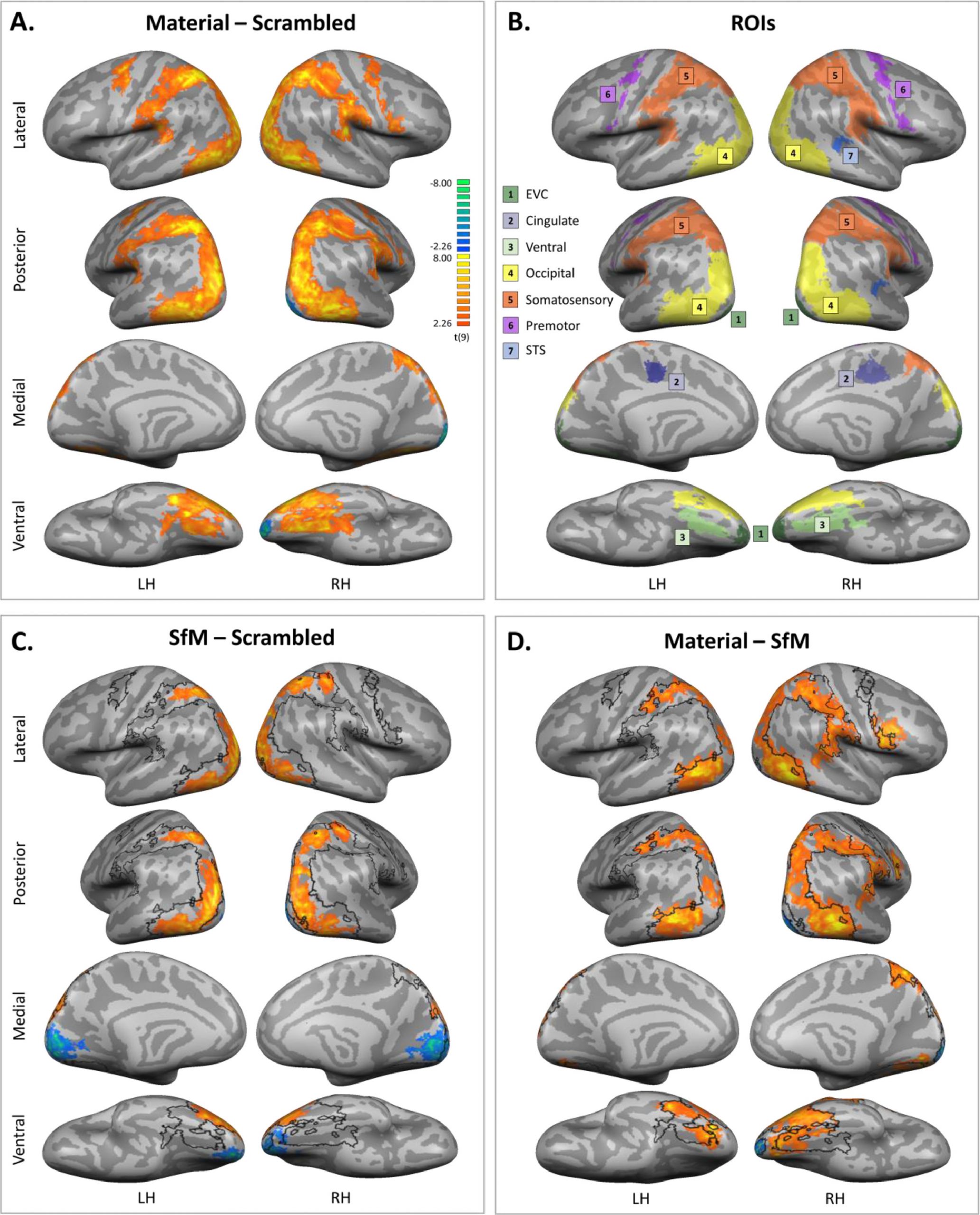Dinamik nokta ekranları kullanan Schimid ve arkadaşları, büyük bir beyin bölgesi ağının materyal hareketine tepki verdiğini gösteriyor. Dinamik nokta gösterimleri biyolojik hareket araştırmalarındakilere benzer ve araştırmacıların hareket ipuçlarını diğer tüm ipuçlarından malzeme özelliklerine (ör. Yüzey yansıması) ayırmasına olanak tanır. İlginç bir şekilde, bu çalışmada maddi harekete yanıt verdiği bulunan alanlar, önceki çalışmalarda biyolojik harekete yanıt verdiği bulunan alanların bir üst kümesini oluşturur.
Abstract
There is growing research interest in the neural mechanisms underlying the recognition of material categories and properties. This research field, however, is relatively more recent and limited compared to investigations of the neural mechanisms underlying object and scene category recognition. Motion is particularly important for the perception of non-rigid materials, but the neural basis of non-rigid material motion remains unexplored. Using fMRI, we investigated which brain regions respond preferentially to material motion versus other types of motion. We introduce a new database of stimuli – dynamic dot materials – that are animations of moving dots that induce vivid percepts of various materials in motion, e.g. flapping cloth, liquid waves, wobbling jelly. Control stimuli were scrambled versions of these same animations and rigid three-dimensional rotating dots. Results showed that isolating material motion properties with dynamic dots (in contrast with other kinds of motion) activates a network of cortical regions in both ventral and dorsal visual pathways, including areas normally associated with the processing of surface properties and shape, and extending to somatosensory and premotor cortices. We suggest that such a widespread preference for material motion is due to strong associations between stimulus properties. For example viewing dots moving in a specific pattern not only elicits percepts of material motion; one perceives a flexible, non-rigid shape, identifies the object as a cloth flapping in the wind, infers the object’s weight under gravity, and anticipates how it would feel to reach out and touch the material. These results are a first important step in mapping out the cortical architecture and dynamics in material-related motion processing.
